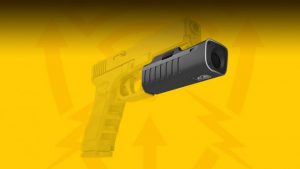 It seems that technology continues to evolve at an ever-increasing pace, with new tools showing up constantly. One of the newest devices to come along is the gun-mounted camera. This device is designed to activate record mode as soon as the officer draws his weapon from its holster. While they are still in short supply and not many departments have integrated them into the inventory. With all the hue and cry about unnecessary shootings and killings by police officers in the news, this technology might actually come in handy.
It seems that technology continues to evolve at an ever-increasing pace, with new tools showing up constantly. One of the newest devices to come along is the gun-mounted camera. This device is designed to activate record mode as soon as the officer draws his weapon from its holster. While they are still in short supply and not many departments have integrated them into the inventory. With all the hue and cry about unnecessary shootings and killings by police officers in the news, this technology might actually come in handy.
Added Angles
When it comes to an officer-involved shooting, there is no such thing as having too many camera angles and video recordings. Even if there are CCTV and body camera recordings of the incident, having a recording from a gun-mounted camera can make a huge difference in the outcome of an investigation. However, investigators should not learn to rely on evidence supplied by more than one source.
While manufacturers claim the video captured by the gun-mounted camera is more apt to capture an unobstructed view of the shooting, this may not always be the case. When it comes to justifying a shooting or proving it was in error, the more camera angles that can be captured the more likely the exact chain of events can be established.
The Advantage of Automatically Coming On
While body cameras must be turned on by the officer wearing them and most departments require them to be on at all times while the officer is on duty, 100 percent compliance is never likely to actually occur. Since gun-mounted cameras are activated the moment the officer pulls his weapon, may help to ensure that at least some portion of the shooting is recorded on video, including sound. This can make the difference when it comes to determining who is found to be at fault in the event of a shooting involving a law enforcement officer.
Lack of Privacy Concerns
Privacy has long been an issue when it comes to the use of body cameras by members of law enforcement. But with gun-mounted cameras, not only do they come on only when drawn, but they have a much narrower field of view. This means they don’t record a large number of the interactions between the officer and any civilians, but what they do record is those precious minutes after the officer has pulled his weapon and made the decision whether or not to use it.
In reality, these are the most important moments in any investigation and those that members of the public are most curious about. These videos can also be used in training officers how to react in certain situations and may, in fact, stop many officers from engaging in abusive behavior. How this will play out remains to be seen as the deployment of gun-mounted cameras throughout law enforcement agencies across the country. In time they may become as important as body-mounted cameras in helping to protect both members of law enforcement and the public from abuse and unfounded accusations.
